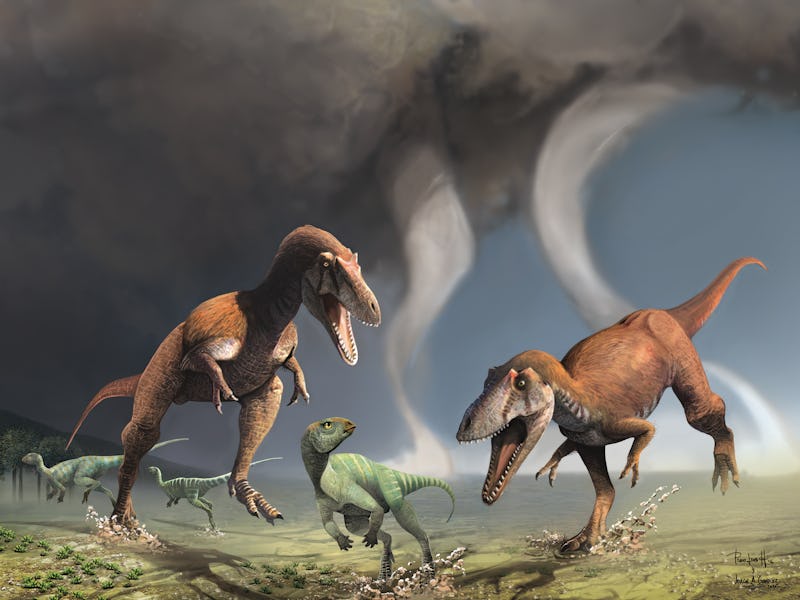T. Rex Wasn't the Only Dinosaur With Tiny Arms
Bigger isn't always better.

A newly discovered dinosaur has tiny little arms — just like a Tyrannosaurus rex — but the animals evolved the trait independently, according to new research. The beast was named Gualicho shinyae and described for the first time Wednesday in PLOS ONE.
“It’s really unusual,” says Peter Makovicky, dinosaur curator at Chicago’s Field Museum and one of the study authors, in a news release. “It’s different from the other carnivorous dinosaurs found in the same rock formation, and it doesn’t fit neatly into any category.” The partial skeleton was recovered in northern Patagonia, and comes from the late Cretaceous period, near the end of the reign of the dinosaurs. Gualicho was a mid-sized theropod, who might have weighed in at around 1,000 pounds.
The scientists conclude that the T. rex and the Gualicho shinyae did not inherit their little arms, with two functioning digits apiece, from a common ancestor. For one, the two animals are not closely related, and many of their nearer relatives do not share this trait. Secondly, while the forelimbs look superficially similar, a closer look shows subtle but important differences that suggest a genetic separation.
Meet Gualicho shinyae. Only the bones in white were recovered; the rest are best guesses based off related species.
This means that the two dinosaurs evolved their teeny wings separately, as a matter of convergent evolution. Convergent evolution describes how unrelated animals develop similar characteristics as they adapt to similar ecological niches. Think sharks and dolphins — one’s a fish, one’s a mammal, but they have evolved similar body plans because they both hunt fish in the ocean.
The T. rex and Gualicho are much more closely related than a shark and a dolphin, but their little limbs are a result of a similar process. What we don’t yet know is why both of these animal evolved tiny arms as useful traits. Was there some special function that only short appendages could perform? Or maybe it was a lack of function — the animals ceased using their forelimbs, and so evolution favored those that wasted less energy growing them.
Maybe there’s some other fossil out there, waiting to be dug up, that holds the answer to these questions. For now, the T. rex is pretty stoked for the company.